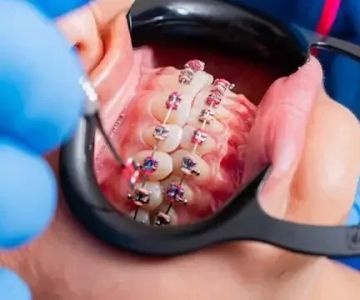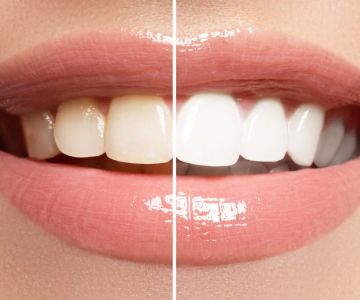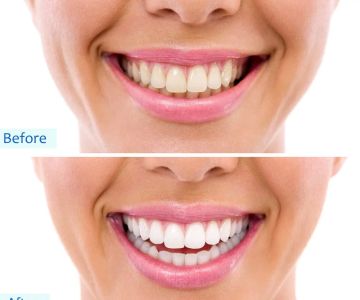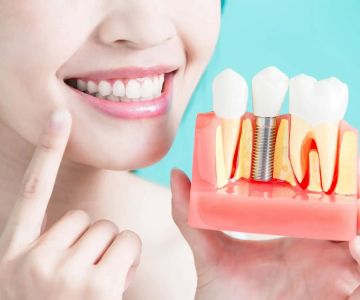Teeth Whitening at Home
In recent years, teeth whitening has become one of the most sought-after cosmetic dental procedures in the United States. With the plethora of over-the-counter products available, many individuals are opting to attempt teeth whitening at home to achieve a brighter, more confident smile. Understanding what methods are effective, safe, and affordable is key to making informed decisions. This topic is particularly significant for those looking to enhance their dental aesthetics without breaking the bank. It's crucial to navigate the options available and to understand the best practices for achieving the desired results at home.
The Popularity and Appeal of Teeth Whitening
Teeth whitening has gained immense popularity due to the desire for a pristine smile, which is often associated with health, success, and confidence. According to a 2022 survey by the American Academy of Cosmetic Dentistry, approximately 80% of adults in the United States wished they had brighter teeth, underscoring the high demand for effective whitening solutions. This increase in demand has led to a variety of products and techniques developed for at-home use, making teeth whitening more accessible than ever. Dentistry Toothtruth provides insights into these trends and helps individuals make informed choices.
Understanding At-Home Whitening Products
There is an array of at-home whitening products, each designed to cater to different needs and preferences. Popular choices include whitening strips, trays with gel, toothpaste, and LED whitening kits. Each product has its own efficacy and potential side effects. For instance, teeth whitening strips are known for their convenience and moderate results, while custom gel trays might offer a more personalized whitening experience. According to studies, peroxide-based whitening agents generally deliver the best results when used as directed. However, understanding the concentration levels and application methods is essential to prevent possible adverse effects such as tooth sensitivity or gum irritation.
The Science Behind Teeth Whitening
At the core of most teeth whitening products is a bleaching agent, usually hydrogen peroxide or carbamide peroxide. These agents work by penetrating the tooth enamel and breaking down the stains into smaller pieces, making the color less concentrated and visibly whiter. Clinical studies indicate that these agents can effectively remove both extrinsic and intrinsic stains accumulated from dietary habits and aging. However, not all stains can be treated with at-home whitening solutions. Identifying the cause of tooth discoloration can determine the effectiveness of these products and whether professional intervention is necessary.
Safety Considerations and Possible Side Effects
When undertaking any teeth whitening process at home, safety should be a priority. Although most over-the-counter products are approved for safe use, they can still cause discomfort if not used correctly. Common side effects include increased tooth sensitivity, which can be mitigated by using toothpaste for sensitive teeth before and after the whitening treatment. Additionally, gum irritation can occur if the whitening agent comes into contact with the soft tissues. It's advisable to consult with a dental professional before beginning any whitening regimen, especially for individuals with existing dental issues or restorations.
Cost-Effectiveness of Home Whitening Solutions
One of the major appeals of at-home teeth whitening is its cost-effectiveness compared to professional dental treatments. While a single in-office whitening procedure can cost anywhere from $300 to $1000, at-home options generally range between $20 and $150. This affordability allows more individuals to access whitening treatments and maintain the aesthetics of their smiles more regularly. However, investing in a higher-priced, dentist-recommended product may provide better results and value in the long run.
DIY Whitening Remedies: Are They Effective?
In addition to commercial products, many people experiment with DIY remedies for teeth whitening at home. Common practices include using baking soda, hydrogen peroxide solutions, or even activated charcoal. While these methods may offer temporary improvements, they lack the scientific backing of formulated products and can lead to enamel erosion if used excessively. It’s essential to approach DIY whitening with caution and consider consulting with Dentistry Toothtruth for professional advice on safe practices.
Conclusion: Achieving a Brighter Smile Safely
Achieving a whiter smile at home is entirely feasible with the right approach and an informed choice of products. By understanding the science behind whitening agents, assessing safety concerns, and considering cost-effective solutions, you can effectively brighten your smile without the need for expensive dental treatments. Always prioritize your oral health by being mindful of the potential side effects and seeking professional advice where needed. Start your journey towards a radiant smile with trusted advice from Dentistry Toothtruth, and take the necessary steps to ensure your at-home whitening experience is both safe and successful.







 Westgate Dental Arts
Westgate Dental Arts Coventry Family Dental
Coventry Family Dental Familia Dental
Familia Dental Dr. Daniel S. Fife, DDS
Dr. Daniel S. Fife, DDS Dentistry At Suburban Square: Michael I. Wollock, DMD
Dentistry At Suburban Square: Michael I. Wollock, DMD Comfort Care Dental
Comfort Care Dental The Importance of Oral Health Education During Pregnancy for a Healthy Pregnancy
The Importance of Oral Health Education During Pregnancy for a Healthy Pregnancy Why Skipping Dental Checkups Can Lead to Bigger Oral Health Problems
Why Skipping Dental Checkups Can Lead to Bigger Oral Health Problems Best Tips for Brushing Your Teeth Properly for Healthy Gums: Essential Techniques for Oral Health
Best Tips for Brushing Your Teeth Properly for Healthy Gums: Essential Techniques for Oral Health Advantages of Porcelain Dental Restorations
Advantages of Porcelain Dental Restorations How Can Diabetes Cause Tooth and Gum Problems? Preventing and Managing Oral Health Issues
How Can Diabetes Cause Tooth and Gum Problems? Preventing and Managing Oral Health Issues Healthy Habits for Promoting Good Oral Health and Hygiene: Tips for a Healthy Smile
Healthy Habits for Promoting Good Oral Health and Hygiene: Tips for a Healthy Smile